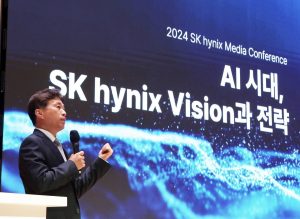Popular Keywords
- About Us
-
Research Report
Research Directory
Semiconductors
LED
Consumer Electronics
Emerging Technologies
- Selected Topics
- Membership
- Price Trends
- Press Center
- News
- Events
- Contact Us
News
- Home
- News
[News] Chinese Auto Giants Xiaomi, XPeng, and NIO Expand into Humanoid Robotics

According to a report from ijiwei, citing China Business Journal, several automotive industry companies—including Xiaomi, XPeng, and NIO—have recently announced their entry into the “humanoid robot” market. The report notes that, based on incomplete statistics, 18 global automakers have now ventured into this market.
As highlighted by the report, Xiaomi’s robot team has announced progress on its humanoid robot, currently advancing the phased rollout of CyberOne on its own production line. According to Xiaomi’s official website, CyberOne stands 177 centimeters tall, weighs 52 kilograms, and is defined as a “full-size humanoid bionic robot” designed for applications in home care, companionship, and various other scenarios.
In 2024, XPeng Motors unveiled its next-generation humanoid robot—XPeng Iron, as mentioned by the report. Citing XPeng Motors Chairman and CEO Xiaopeng He, the report states that the AI robot XPeng Iron will be equipped with multiple self-developed chips to support an end-to-end large model, feature 15 degrees of freedom, and be fitted with bionic hands that offer tactile feedback.
As noted by the report, GAC Group also released its third-generation embodied intelligent humanoid robot, GoMate, ahead of 2025, achieving fully self-developed core components such as drivers, motors, and dexterous hands.
GoMate’s standout feature is its “variable wheel-leg mobile structure,” which allows it to achieve a top speed of 15 km/h and operate continuously for over 2 hours, while also having the capability to mimic human actions for performing delicate tasks, as the report points out.
The report also mentions that, citing sources, NIO has formed a team of approximately 20 people dedicated to its robot dog projects. In 2023, NIO has already established a humanoid robot team, primarily focused on the underlying technologies of humanoid robots, including algorithms, dynamic perception, and large models, as the report from China Business Journal indicates.
Apart from Chinese carmakers, the report states that, as a leader in the robotics field, Tesla is accelerating the mass production of its humanoid robot, Optimus. Tesla’s production plan indicates that 10,000 Optimus robots will be produced in 2025, with production capacity expanding to 1,000 units per month; in 2026, monthly capacity will reach 10,000 units, and by 2027 it is expected to further increase to 100,000 units per month, as the report notes.
According to TrendForce, a comparison of core technological specifications of humanoid robots from the US and China reveals that American companies focus on industrial applications, prioritizing payload capacity and battery life, while Chinese manufacturers emphasize versatility and greater degrees of freedom in full-body and hand movements.
TrendForce highlights that, much like the current AI competition between high-capital and low-cost approaches, the humanoid robotics sector in the US and China reflects their respective strengths.

Read more
- Humanoid Robots to Become the Next US-China Battleground, with Price Differentiation and Tiered Applications as Emerging Trends, Says TrendForce
- [Insight] Analysis of Humanoid Robot Vision Systems and Opportunities for Taiwanese Companies
(Photo credit: Xiaomi)




